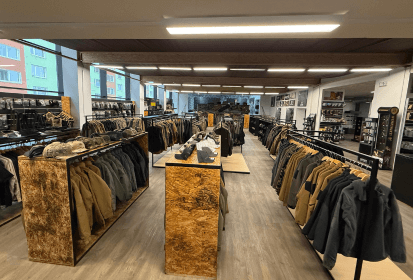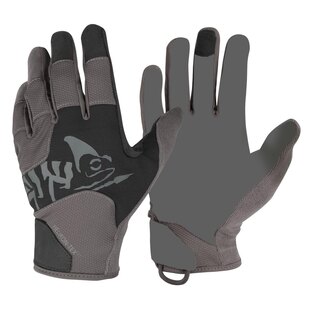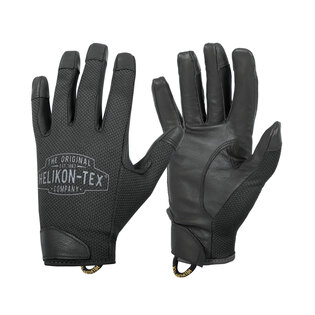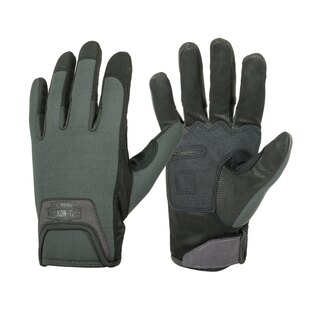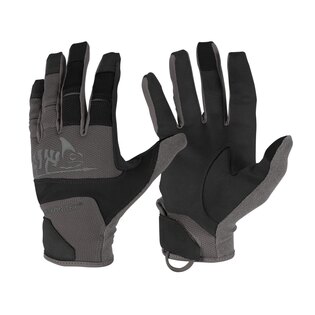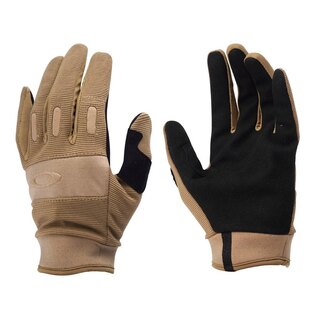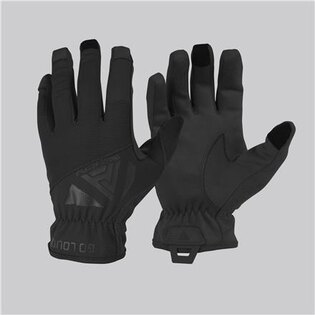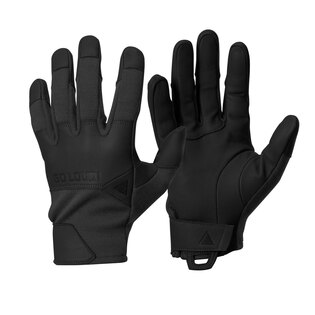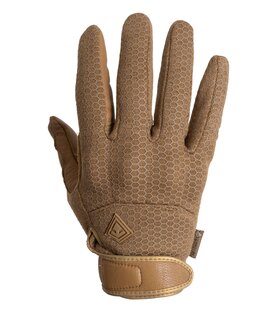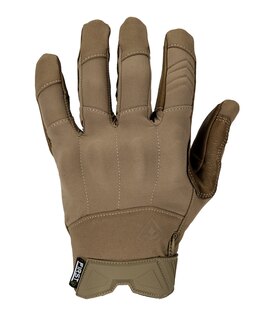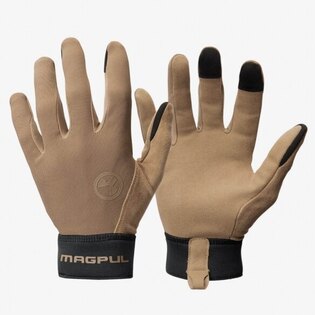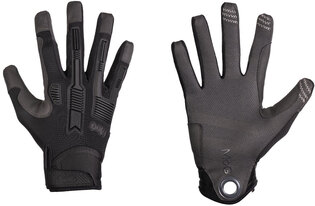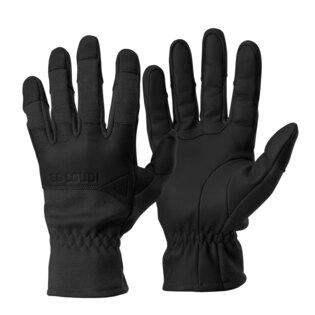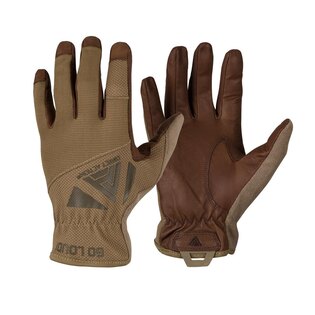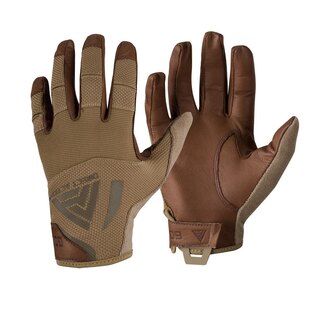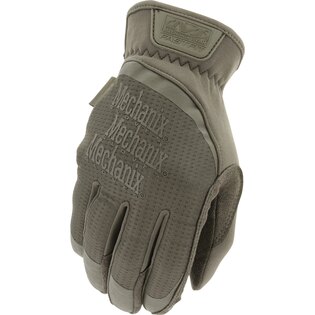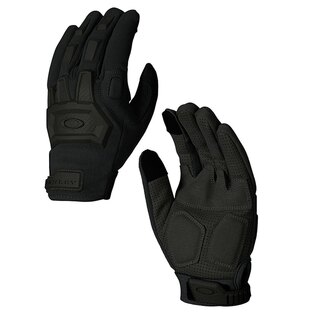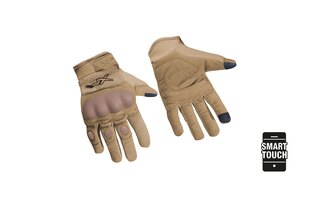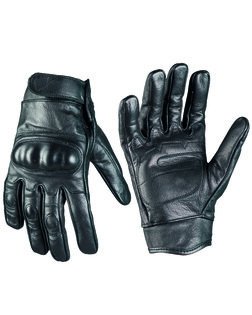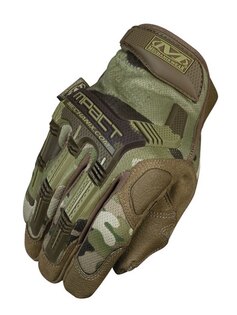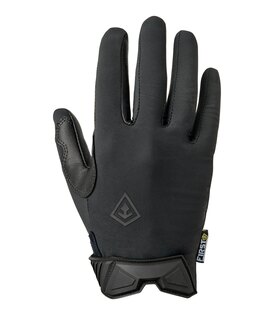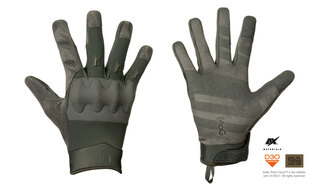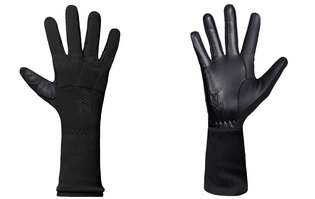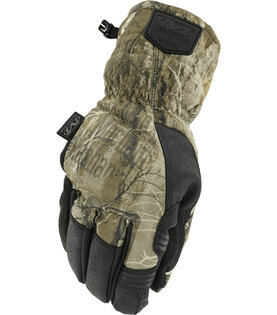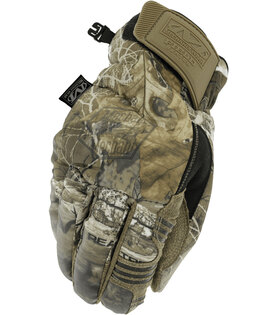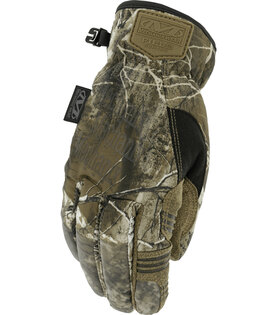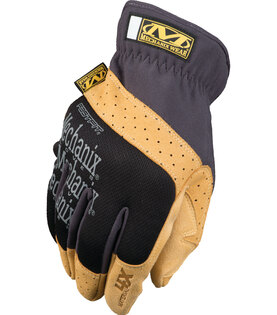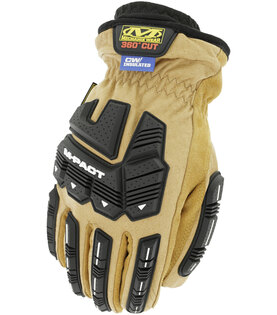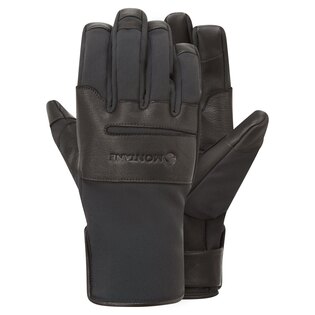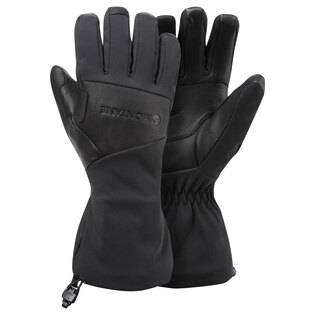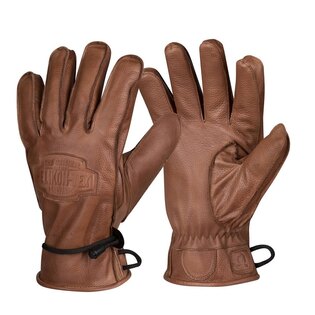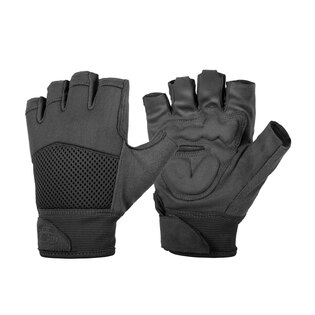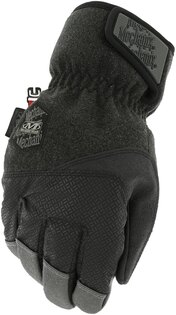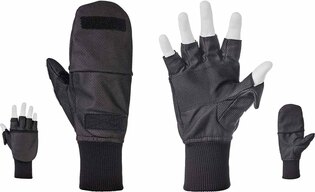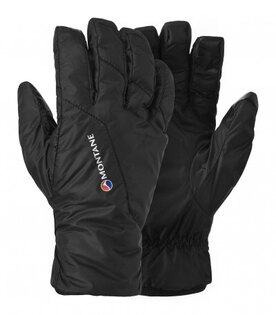Shooting and Tactical Gloves: A Guide to Choosing the Right Pair and Key Features
Properly chosen gloves are an important part of your loadout. Shooting and tactical gloves affect shooting accuracy, grip security, and comfort during longer sessions — and it’s often these small details and quality components that either improve your performance or hold it back. In this article, we’ll compare shooting vs. tactical gloves, explain what to look for (material, fit, protective elements), and show you how to recognize a model that will last and truly fit your hand.
Quick Overview: What to Know Before You Buy
- Shooting gloves: thin, tactile, designed to let you control the trigger precisely and handle the weapon with confidence.
- Tactical gloves: more robust, often with reinforcements and better protection for knuckles and palms — ideal for harsher environments or duty use.
- Cold weather: go for insulated models with a water-resistant or waterproof membrane to keep your hands warm during prolonged outdoor use.
- Frequent shooting: a leather-and-synthetic combo offers excellent feel, abrasion resistance, and comfort even during longer range days.

Shooting gloves MoG with precise fitting allow for a secure grip on the weapon and full sensitivity for trigger operation.
Why You Should Care About Glove Selection
Yes, plenty of experienced shooters sometimes shoot bare-handed — it’s possible. But in bad weather or during extended training, we can probably agree it’s not ideal. In rain you need water resistance, in cold you need insulation, and during several hours on the range you want comfort and the certainty you won’t end up with hot spots or abrasions.
Without suitable gloves it’s much easier to lose grip due to sweat, get palm slippage, or feel less confident when manipulating the firearm — and minor injuries become more likely.
That’s why both shooting and tactical gloves have a stable place in your gear. Shooting models prioritize feel and precision; tactical models focus on protection in demanding conditions — but the shared requirement is that the glove must not interfere with weapon control. The right pair will improve accuracy, comfort, and safety without getting in the way.
Shooting vs. Tactical Gloves
The terms shooting gloves and tactical gloves are often used interchangeably, but in practice each serves a slightly different purpose.
- Shooting gloves are designed for maximum dexterity, precision, and secure weapon handling.
- Tactical gloves prioritize hand protection — they cope better with demanding environments, feature reinforced areas, and protect knuckles and fingers from impact, hard edges, or obstacles.
The difference isn’t black and white, though. Many modern models combine elements of both categories — the dexterity and lightweight construction of shooting gloves with the protection and durability of tactical gloves. That way you can pick a pair that matches your shooting style, environment, and comfort requirements.
Main Differences at a Glance
🟢 Shooting Gloves
- Designed for precise weapon manipulation, secure grip, and good trigger feel.
- Made from thin, flexible materials (goatskin, synthetics, stretch panels).
- Minimal reinforcements to preserve fingertip sensitivity.
- Ideal for the range, sport shooting, or training.
- Key advantage: dexterity, light weight, control.
🟢 Tactical Gloves
- Built for demanding environments where hand protection matters.
- Use tougher materials (nylon, neoprene, Kevlar, leather blends).
- Include knuckle guards, padding, and impact-absorbing inserts.
- Suitable for duty use, airsoft/MILSIM, or outdoor work.
- Key advantage: durability, versatility, protection.
👉 If you shoot a lot or spend long hours on the range, pick thinner shooting gloves with flexible materials to preserve full finger sensitivity.
👉 For duty work, field training, or tactical tasks, go for tactical gloves with more protection, padding, and reinforcements — they tolerate harsher use and give more confidence during physical tasks.

Durable gloves with a non-slip palm and reinforced knuckles protect hands when handling equipment and in the field.
What to Look For When Choosing Gloves
When gloves fit well and work the way they should, you stop noticing them. That’s the ideal. To get there, pay attention to several key characteristics that affect comfort, dexterity, and overall durability.
Materials
Material determines the glove’s durability, feel, and comfort — and with both tactical and shooting models, the best results often come from material hybrids that combine the strengths of each.
🟢 In general:
- Leather (natural or synthetic) – a classic for palms: offers natural feel, good grip, and very high abrasion resistance. A leather palm “breaks in” to the hand and often extends glove life. Downsides: lower breathability and slower drying after being wet.
- Synthetics (nylon, polyester, spandex/elastane, neoprene, etc.) – lighter, faster drying, and more flexible; improve ventilation and mobility. Modern synthetics are often abrasion-resistant and feature anti-slip coatings.
- Hybrids – common and purposeful: leather palm + synthetic back = secure grip + low weight + better heat/moisture management.
🟢 What Tactical Gloves Typically Use:
Tactical glove construction is wide-ranging and often debated. Here are common elements — and why they’re there:
- Reinforced/textured palm – extra textured layers (synthetic leather with grip, polymer print, etc.) increase traction and abrasion resistance.
- Knuckle protection – done either with a hard shell or softer rubber/neoprene inserts. Hard shells give high impact protection but can reduce feel; softer solutions absorb impact and maintain flexibility.
- Cut-resistant / Kevlar liners – used in higher-risk applications to improve cut and slash resistance.
- Special blends (carbon, aramid components) – appear in select models to increase protection while keeping weight reasonable.
- Spandex / stretch panels – improve fit and allow natural hand movement.
- Softshell / neoprene parts – sometimes used for warmth or comfort, though they’re not always ideal for heavy abrasion.
- General design principle: most tactical gloves combine multiple materials so that protection is placed where needed while mobility and dexterity are preserved elsewhere.
🟢 What Shooting Gloves Typically Use:
Shooting gloves prioritize trigger feel and control:
- Goatskin – very popular for palms thanks to its fine texture, good grip, and ability to preserve trigger feel. It’s hard-wearing yet sensitive.
- Nylon + elastane (spandex) – frequently used on the back of the hand and between fingers to provide stretch and fast moisture transport.
- Anti-slip prints – microtextures, silicone or polymer overlays on palm and fingers help maintain grip even when wet.
- Light palm reinforcements – present, but more subtle than in tactical gloves. The goal is added durability without killing sensitivity.
🟢 Practical Recommendations:
- For maximum trigger feel (competition, precision work), look for thin cuts with goatskin palms and stretch panels on the back.
- For general, all-round use (training, outdoor range days), pick hybrid models: leather palm + breathable synthetic back.
- For tactical/duty use, choose models with a hard-wearing palm, knuckle protection, and possibly cut-resistant inserts — but make sure those elements don’t overly reduce trigger feel.
👉 Tip: If you shoot in varying weather, consider having two sets of gloves — lightweight shooting gloves for warm/dry conditions and a more robust tactical pair for wet, cold, or rough environments.
🟢 Other Materials You May See:
Some tactical or specialized shooting gloves add materials for specific use cases:
- Nomex (flame-resistant aramid) – for environments with heat or flame risk. Not a universal everyday solution, but essential in certain roles.
- EVA foam – light padding for impact absorption, often in palms.
- Microfleece lining – common in winter models: warm, light, fairly fast drying.
- Silicone prints/panels – for extra grip on wet or smooth surfaces; excellent for traction, but can increase wear on some fabrics.
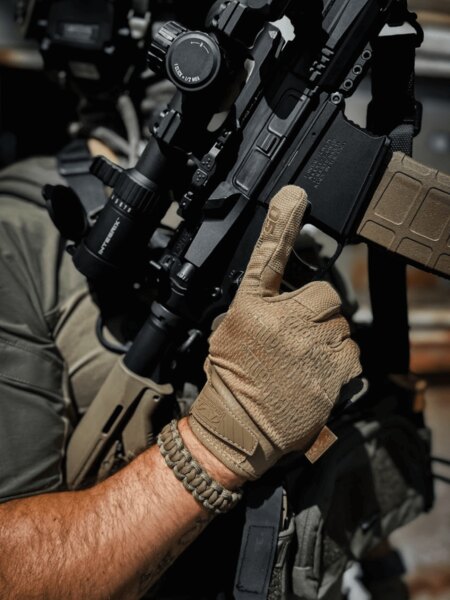
Combination of synthetic materials and leather ensures a secure grip and durability, with knuckle reinforcements providing protection during contact with weapons and equipment.
Protective Features
Hand protection is key mainly in tactical gloves, but shooting gloves can benefit from it too. Well-designed protection helps absorb impact, protect the knuckles, and improve confidence in the grip — without making the glove stiff.
Palm padding, knuckle reinforcements, and back-of-hand overlays help when working around hard edges, weapon parts, or gear. Tactical models often use softer rubber or neoprene protectors that absorb impact but don’t limit movement.
A very common material is TPR (thermoplastic rubber) — a flexible rubberized plastic that absorbs shocks well, is lightweight, and still allows good finger mobility. It’s popular because it strikes a great balance: more protection than a bare textile overlay, more flexible than a hard shell.
Hard-shell knuckle guards offer maximum protection but can make trigger work and fine motor tasks harder — so they’re better for environments with higher risk of mechanical injury. Some advanced models combine soft TPR with cut-resistant liners (Kevlar, aramid) or carbon inserts to protect without sacrificing control.
Good gloves should never feel “armored.” Too much stiffness or overbuilt reinforcements increase durability but reduce feel and slow down reactions. The key is balance — protection where it’s needed most and freedom where precision matters.
Dexterity and Finger Mobility
For shooting gloves, dexterity is critical. You must be able to work the trigger precisely and manipulate the safety, slide, or other controls. Materials that are too thick or rigid will reduce sensitivity. Thin, stretch panels and well-placed seams help the hand move naturally.
Look for details that support dexterity:
- Pre-curved fingers to prevent bunching when you grip,
- Elastic inserts between fingers for better range of motion,
- Smooth or seamless fingertips to reduce hotspots,
- Textured or reinforced fingertips in high-wear areas.
If you need to operate a phone, PDA, or terminal, choose models with touchscreen-compatible fingertips.
👉 Tip: Ideally, try the gloves on with your own firearm.
Breathability and Moisture Management
Hands warm up and sweat during shooting. If the material doesn’t move moisture away, your grip and weapon handling will suffer. Breathable gloves with vent holes, mesh panels, or thinner synthetic fabrics help keep your hands dry, improve traction, and make longer sessions more comfortable.
Well-ventilated gloves also last longer — sweat and moisture can degrade fabrics and glued parts over time. For winter gloves, check whether the manufacturer combines insulation with moisture management — otherwise condensation can build up inside and reduce comfort and finger feel.
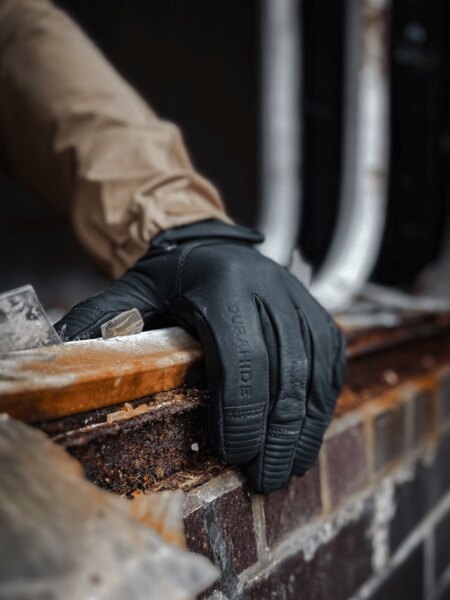
Natural leather provides excellent grip, sensitivity, and high wear resistance even in demanding conditions.
Extra Features
Modern gloves often include small, smart details that make everyday use easier:
- hook-and-loop closures or elastic cuffs for a secure fit,
- pull loops for easier donning and for attaching gloves to a vest or pack,
- well-shaped closures so the glove doesn’t shift or bunch during manipulation.
On shooting gloves you may also see thinned or removable index-finger sections for more precise trigger work, or conductive panels for touchscreen operation. These little things often decide whether a glove becomes your go-to or not.
👉 Tip: Check whether the glove’s features match your shooting style — some people value a pull loop, others touchscreen fingers, others a firmer wrist closure.
Sizing and Fit
Ideally, gloves should fit snugly but not restrict finger or wrist movement.
When you make a fist, the material shouldn’t bunch up or dig in. For shooting, you especially want enough room and freedom in the index finger — that’s what determines trigger precision and comfort.
If you’re between sizes, choose the smaller one. Quality materials will break in after a few training sessions and conform to the hand.
👉 Tip: Gloves should feel like a second skin — if you need extra force to bend your fingers, they’re too small; if the material folds when you grip, they’re too big.
Care and Durability
Even high-quality gloves need basic care to last. Wash them gently — ideally by hand or on a delicate cycle, without fabric softener. Let them air dry away from direct heat so the materials don’t lose elasticity and shape.
Leather parts benefit from occasional leather care products to keep them supple and prevent cracking. Synthetics mostly need just gentle washing and thorough drying.
Inspect seams, reinforcements, and closures regularly — a small fix in time can extend glove life by months, sometimes years.
Good maintenance pays off quickly: the gloves keep their shape, performance, and comfort.
Conclusion: How to Tell You Picked the Right Gloves
Whether you’re heading to the range, into the field, or to duty training, good gloves are not just an accessory — they’re a functional part of your kit that will influence your overall performance.
The right pair improves grip, increases precision, and protects your hands even in harsh conditions — while still preserving trigger feel and weapon control.
From this guide, remember just a few key points:
- choose by purpose – shooting gloves for dexterity and precision, tactical gloves for durability and protection,
- watch material and cut – leather + synthetics is often the sweet spot,
- ensure breathability and correct sizing,
- and don’t underestimate details – closures, reinforcements, touchscreen panels, or an ergonomic cut will be obvious from the very first training session.
On Rigad.cz you’ll find both shooting and tactical gloves for different use cases – from lightweight models for sport shooting to robust gloves for field work.
👉 Browse shooting and tactical gloves at Rigad.cz.
Readers are further interested

